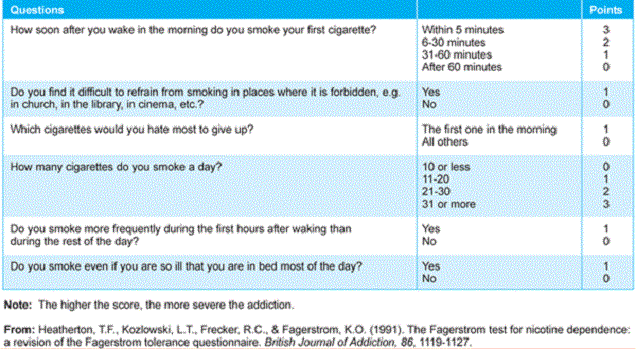
Another study has called the addiction-based criticisms of vapers into question, suggesting that e-cigarettes are as addictive as, or even less addictive than nicotine gums – in other words, not very addictive at all. The finding is particularly valuable because many people opposed to vaping argue that e-cigs are just as addictive as tobacco cigarettes, and this study joins another recent finding in demonstrating that vapers are less addicted than they were as smokers. Unless those anti-smoking groups are happy to turn against pharmaceutical nicotine gum on the same grounds, this study is set to become a useful tool in demonstrating the hypocrisy at the core of the opposition to e-cigarettes.
What They Did – Comparing the Addictiveness of Cigarettes, E-Cigs and Gums
The basic aim of the study – conducted by Jean-François Etter and Thomas Eissenberg – was to compare the dependence on e-cigarettes, tobacco cigarettes (at one point referred to as “pyro-cigarettes,” a term I thoroughly approve of) and nicotine gums, using measures of dependence such as the Fagerström test for nicotine dependence, the nicotine dependence syndrome scale and the cigarette dependence scale. These were adapted to suit e-cigarettes, using 10 puffs of an e-cig as equivalent to one traditional cigarette, and they also used some more general signifiers of addiction, including unsuccessful attempts to quit, their perceived likelihood of quitting if they tried and a comparison of how addicted they thought they were on e-cigs or gum in comparison to when they were smokers.

They recruited participants from quit-smoking websites and e-cigarette websites, but also used a smaller sample from the general population (of Geneva) for a more representative sample (smokers who go on stop-smoking websites are obviously different to the average smoker). They compared 766 daily vapers of nicotine liquids with 30 of no-nicotine liquids, 911 ex-smokers who vaped daily with 451 ex-smokers who used nicotine gum daily, and 125 dual users of e-cigs and cigarettes with two samples of daily smokers (2206 recruited online and 292 from the general population). They also compared the dual users with the ex-smoking vapers. More information is available in the full paper, although it’s behind a paywall.
What They Found – E-Cigarettes are Less Addictive than Cigarettes, Similar to Gums
The core finding was that vapers – whether ex-smokers or dual users – were less dependent than those who only smoked. The 911 ex-smoking vapers used an average nicotine concentration of 12 mg/ml, and 99 percent of them used refillable e-cigarettes. Only 23 percent were classed as dependent based on the Fagerström test, and 21 percent based on the cigarette dependence scale, with just 9 percent saying they used e-cigarettes because they are dependent on them.
74 percent of the ex-smoking vapers rated their addiction to e-cigarettes as weaker than their previous dependence on cigarettes, with 21 percent saying it’s the same and 3 percent saying it’s stronger. Of course, this is a retrospective comparison, so there’s a chance for some bias (i.e. some may have exaggerated past cig dependence). There was also a significant difference between the time from waking to first vape (32 minutes) and previous time to first cigarette (23 minutes), an important measure of nicotine dependence. For the dual users, 62 percent said their dependence was weaker after starting to vape, and their cigarette consumption had dropped from an average of 23.3 per day to 11.7 per day.
For former smokers who vaped vs. those who used gums overall, there was very little difference in dependence scores. In the Fagerström test, e-cig users scored a little higher, but in the modified cigarette dependence and nicotine dependence scales, they scored a little lower. However, when the long-term users were considered, scores for the e-cig users were significantly lower on the cigarette and nicotine dependence scales, but roughly the same on the Fagerström test. Additionally, long-term vapers were less likely to say they used the product because they were addicted (11.4 percent for vapers vs. 82.8 percent for gum users) and much less likely to have tried to quit but failed in the past year (1.3 vs. 37.2 percent).
When dual users were compared with the smokers, they were generally less addicted than those who only smoked. The differences were larger between the dual users and the internet-recruited sample of smokers, but there was a significant difference on the cigarette dependence scale for both the internet and general population samples. For the other two dependence scales, dual users scored significantly lower than the internet sample, but there was no difference at all on the Fagerström test between the dual users and general population of smokers. Dual users rated their level of addiction significantly lower than both groups of smokers, but they smoked a cigarette much sooner after waking (almost an hour sooner compared to the general population sample).
Are E-Cigarettes Really Comparable to Gums in Addictiveness?

The other recent, similar study addressed the question of the relative addictiveness of cigarettes to e-cigarettes, coming to the same conclusion as this one, but this is the first time e-cigarettes have been compared to nicotine gums in addictiveness. The findings suggest that in long-term users, e-cigarettes are actually less addictive than nicotine gums, and in the discussion section of the paper the authors point out that long-term use of gums is primarily due to addiction, whereas for e-cigarettes it appears that most vape to avoid relapse to smoking or to reduce harm. The fact that vapers rarely reported failed quit attempts but gum users did also suggests that e-cigs are less addictive.
However, the authors point out that the gum users may have been more dependent than the vapers prior to using the products, and that the gum users (and smokers) were recruited using different methods to the vapers at different times, so comparisons should be interpreted cautiously. Additionally, since the “reasons for use” were self-reported, it’s possible that some vapers underestimated the role of addiction in their continued vaping. Similarly, the lower rates of failed quit attempts in vapers could be because fewer vapers try to stop in the first place, rather than because those who do try normally succeed – while the low dependence scores (and our personal experiences) suggest it’s probably true that vapers would be able to quit easily, it isn’t necessarily the case.
That all said, the authors’ conclusion that e-cigs are as addictive as or even less addictive than gums does seem fair, and as we pointed out in our summary of the last study along these lines, the lack of MAOIs in e-cigs likely has a big part to play in their lower addictiveness in comparison to cigarettes.
Conclusion – More Good News that Will be Ignored
So it’s pretty clear from this study that vapers aren’t hopelessly addicted as many opposed to e-cigs will claim, and in fact, we’re likely similar to nicotine gum users when it comes to addictiveness. Of course, this won’t stop such criticisms being made of vapers, because the findings of positive studies are rarely – if ever – disseminated as widely as negative ones like the recent formaldehyde study. It may help us in putting forward the case for e-cigarettes, but if we’ve learned anything over the past few years, it’s that evidence matters very, very little to those who oppose vaping.

